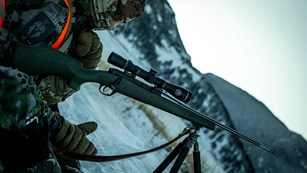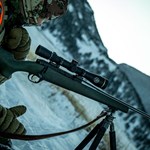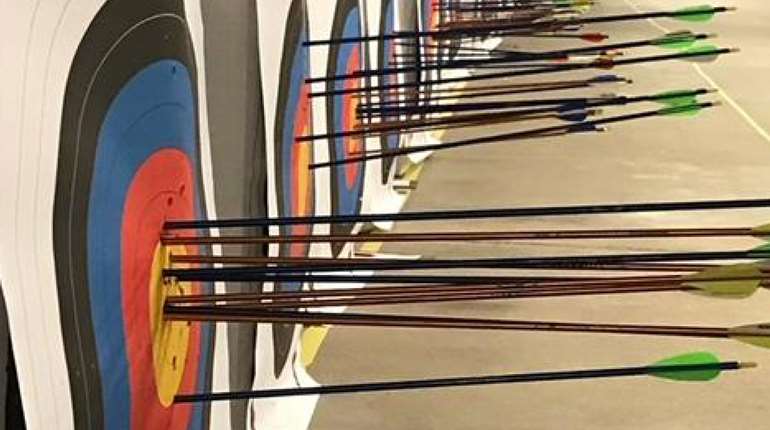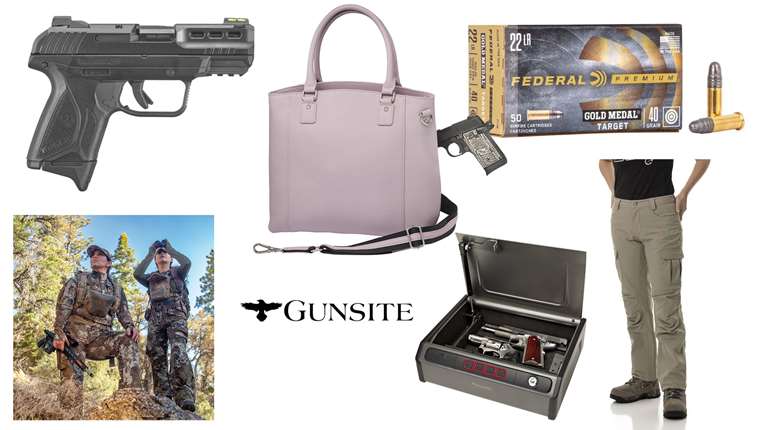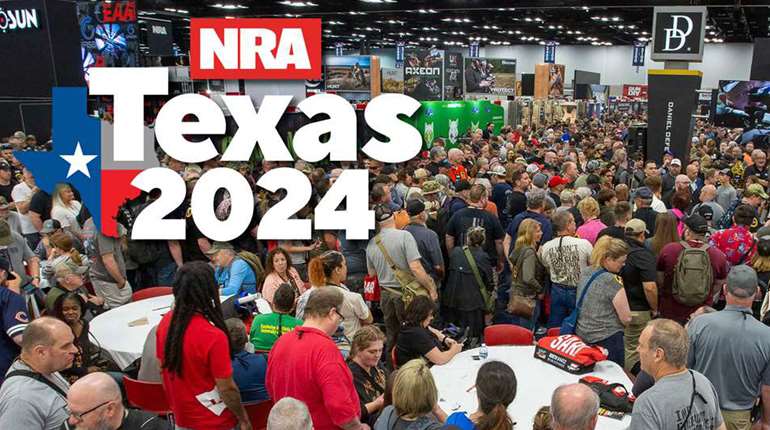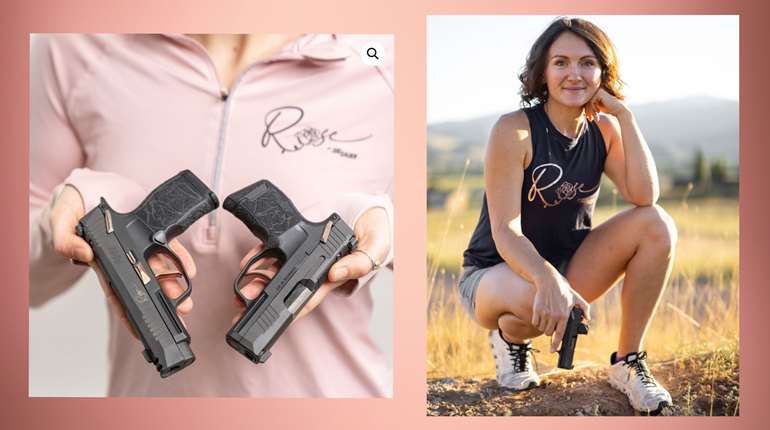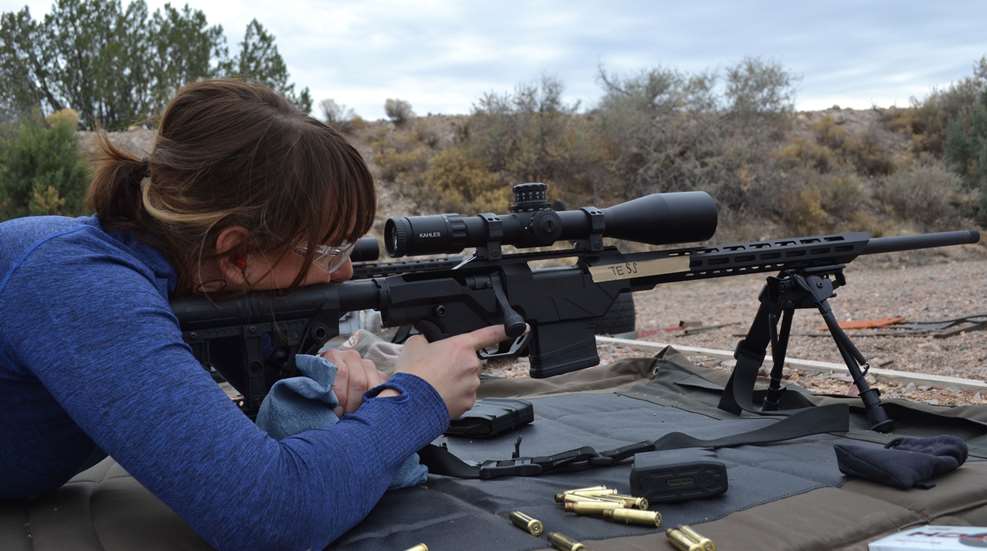
Long-range shooting is one the hottest trends in the shooting sports at the moment. Some shooters are joining the PRS (Precision Rifle Series) game or other long-range shooting competitions like the NRA’s F-Class. Others are just looking to plink at the range, while still others are seeking to extend their hunting range. Whatever the reason you’re interested in long-range shooting, you’ll need some specific gear. You can spend huge sums of money in this game, but you definitely don’t have to in order to get set up properly. What do you really need, where can you save, and when should you splurge?

1. An MOA Rifle (at least)
Modern manufacturing methods have gotten so good and so precise that nearly all of today’s rifles will shoot MOA. What does that mean? An MOA, or minute of angle, is an angular unit of measure that we use to determine accuracy. One MOA is approximately 1 inch at 100 yards, 2 inches at 200 yards, etc. This means that at 1,000 yards, which is the benchmark we’ll use for the purposes of discussing long-range shooting, one MOA is 10 inches. This means that under ideal conditions, with a perfect shot on behalf of the shooter, a gun that’s capable of one-MOA accuracy will put projectiles somewhere in a 10-inch circle, and that’s the absolute best it can be expected to do. For this reason, a sub-MOA gun (a gun that will group tighter than 10 inches at 1,000 yards) is preferable for long-range shooting.
Purpose-built long-range guns are often heavy, because the weight helps stabilize the rifle and control recoil. They will also often have adjustability built into the stock (or a custom stock) and a very good trigger. You’ll need a crisp trigger break to help you make the most accurate shot you can—which requires you having as little impact on the rifle as possible.
You don’t have to spend a fortune here. I have personally had great long-range success with the Ruger American Predator (not specifically a long-range gun but a screaming deal at $530 MSRP), the Mossberg MVP Precision and the Remington 700 Magpul Enhanced. The 6.5 Creedmoor, 6mm Creedmoor, 6.5 PRC and .308 Win., among others, are popular long-range cartridges.
2. Quality Optic
You need good glass to see at these distances with minimal distortion. You also need a ballistic turret on your riflescope, which will allow you to sight the gun in and then set your zero stop. This lets you dial the elevation turret for the appropriate distance and always return to your zero, so you never have to wonder how many times you turned the dial or what elevation you’re set for. Ballistic turrets allow for fine elevation adjustments, usually ¼-MOA per click.
Your reticle should have horizontal hashmarks that let you hold left or right in measured increments to account for wind, and possibly also vertical hashmarks if you think you’ll ever need to hold for elevation rather than dialing.
I prefer a first-focal-plane scope for long-range shooting because the math is easier—your hashmarks will always represent the same number of MOA. However, your reticle will get larger as you use more magnification, which can be problematic on very small targets. If that’s a primary concern for you, go with a second-focal-plane scope, understanding that you’ll have to do a little math regarding your hashmarks as the magnification changes.
I’ve had good luck shooting long distance with the Zeiss Conquest line and long-range scopes from Swarovski and Kahles.
3. Solid Rests
Long-range shooting requires you and the rifle to be as stable as possible, which is why prone is often the shooting position of choice. On the bench, in the field or lying prone, you need a stable rest. Bipods are common on long-range guns to stabilize the front of the rifle. The rear of the rifle should be stabilized on a sandbag, a backpack, the webbing between your support-hand thumb and index finger, or some other support mechanism.
4. Accurate Ammo
Every rifle “likes” different ammo, and it’s not always a predictable pairing. You’ll have to experiment to find what your rifle shoots best, and this is no time to buy the cheap stuff. Quality ammo that’s highly consistent from cartridge to cartridge is in order, and this is usually labeled “match ammo” or “match-grade ammo.” Match ammo simply means ammo that’s suitable for competitions, and it is manufactured to tight tolerances for a high degree of consistency.
Not all match ammo is suitable for hunting, so if you plan to take long pokes at game animals (whether you should and how far you should go is a whole other article), you’ll want to select match-grade ammo that also offers the terminal performance you’ll need to make a clean kill.
5. Rangefinder
You must know how far you’re shooting—and I mean exactly how far you’re shooting—if you have any hope of dialing your elevation turret to the correct hold and hitting your target. You can get fancy and purchase a pair of rangefinding binoculars that sync to your ballistics app and tell you exactly how to dial your turret, or you can stick with a basic laser rangefinder without the bells and whistles. Just be sure the model you select is capable of ranging at the distances you plan to shoot. Some hunting models are made specifically for bowhunters and won’t read targets as far as you’ll want.

6. Ballistic App
Ballistics is complicated math involving angles and curves. Old-school snipers kept detailed log books, and this is still a good practice, but a bevy of smartphone apps are available that do all the math for you. I use the Zeiss Hunting app, which is free, but you’ll find several options in your app store. Just plug in the specifics of your rifle and load and the app will spit out a chart showing your holdover. Many of these apps integrate with your optic as well, and you can add different profiles for each gun or gun/ammo combo you use. Some will gather the local atmospheric/weather conditions and use that to give you a more accuracy dope table.
Other Helpful Items
As you get more into long-range shooting, you might also want to add a wind meter (Kestrels are popular), a shooting mat that makes the prone position more comfortable, and, perhaps most importantly, some professional instruction. A good instructor can shorten the learning curve significantly and help analyze any flaws in your form or your equipment that might be holding you back.




